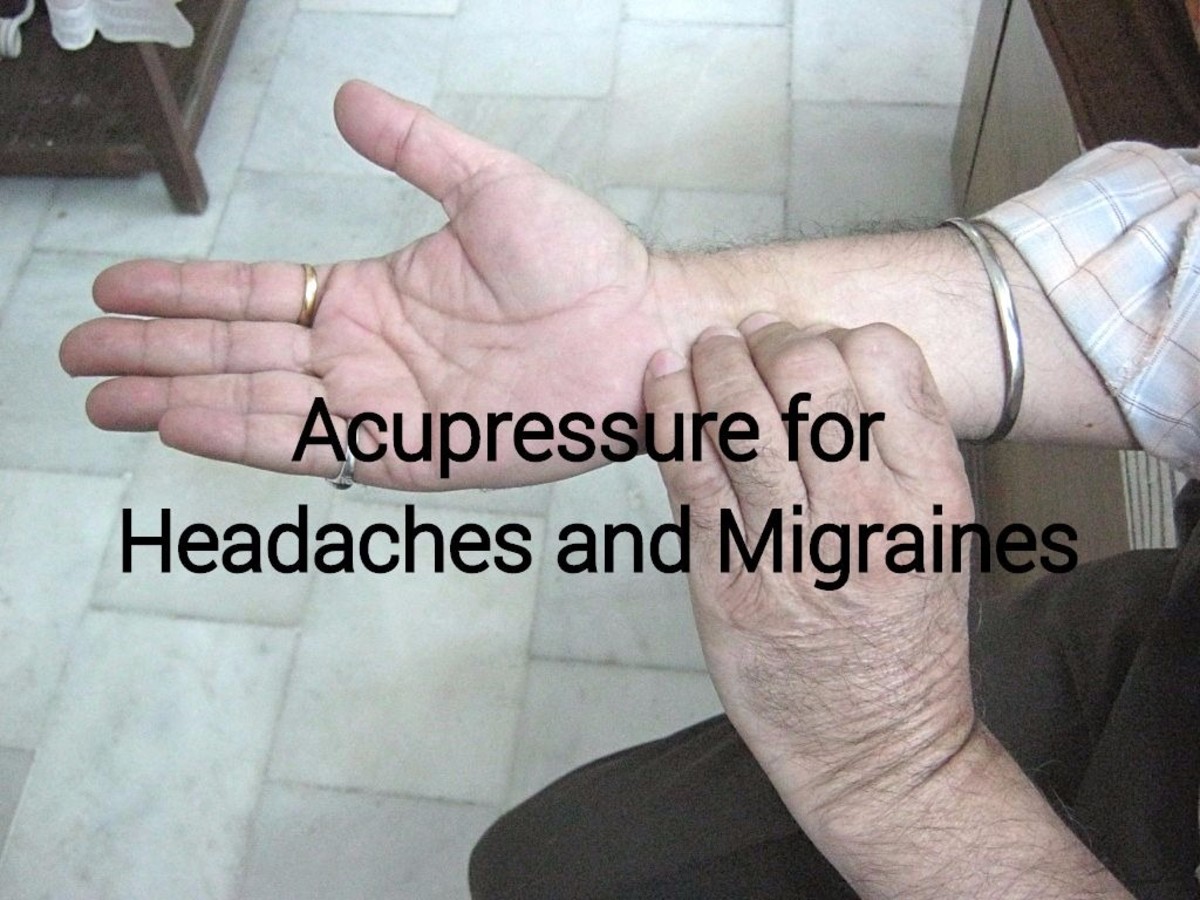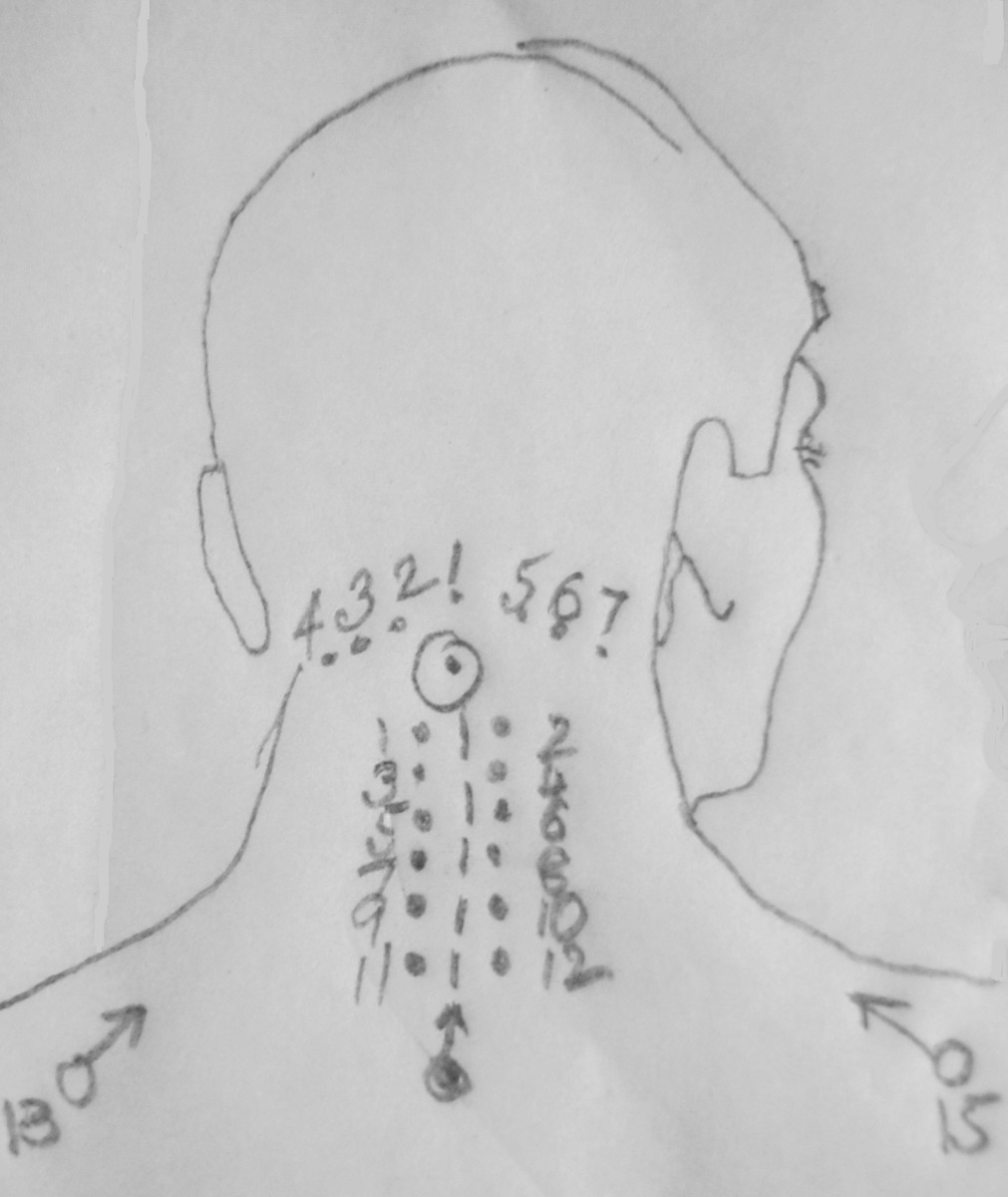
What Causes Headaches and Migraines?
Not only thousands, but hundreds of thousands of people suffer from severe headaches and migraines. Surprisingly, the medical system offers few satisfactory cures for these ailments. Acupressure or pressure point therapy, if done correctly and diligently, can offer sufferers relief.
Those who are prone to headaches and migraines often experience throbbing inside the head and severe pain in half of the head or the entire head. One might experience visual disturbances, hypersensitivity to noise, as well as anxiety, nausea, or vomiting. Individuals may remain affected by symptoms for days on end.
Women are more prone to headaches and migraines due to hormonal disturbances, abnormalities of the reproductive organs, and urinary tract infections. Some women experience them with the onset of menses or during menopause.
Migraines and headaches can also arise from a number of triggers:
- improper liver or gallbladder function
- abdominal gas
- constipation
- high blood pressure
- chronic colds
- earache
- toothache
- nerve pain
- mental stress
- head injury or tumors
- mental exertion
- hot weather
- eye strain
- travel
| Alcohol (beer) | Cottage Cheese | Meat |
| Carbonated Drinks | Banana | Certain Medications (oral contraceptives) |
| Coffee | Plum | Excess Physical Exertion |
Treatment of Headaches and Migraines With Acupressure
Within a few days of undergoing acupressure or pressure point therapy, those suffering from headaches or migraines will start to get relief. To cure these ailments, it is necessary that all pressure points on the hands and feet are subjected to pressure (especially those points which are painful when pressed).
You can see pressure points where the head meets the neck in figures 1 through 7 below. Pressure can be given with the thumb and fingers for a few seconds on each point. Application of pressure on these points will either stop the pain immediately, or will reduce it to the bare minimum.
Figures 1 and 2
Apply pressure on the side of the neck as shown in figures 1 and 2. Ensure that the pressure is applied to these points from top to bottom and not vice versa. Use your thumb or fingers to apply pressure.
Figure 3
Apply pressure to the tips of the toes and the big toe of both feet. Move onto the thumbs and fingertips of both hands. These points are connected to the head and brain.

Figures 4, 5, and 6
During a migraine or a severe headache, there is heaviness, pain, and tension in the head, neck, forehead, and eyes. To alleviate this, all of the fingers, toes, and thumbs should be massaged on all sides from top to bottom, and pressure should be applied as shown in figures 4 and 5. Pressure should also be applied on the sides, the top, and the undersides of the thumbs and the big toes (as shown in figure 6). These areas are related to the neck, and pressure on the thumbs will relieve a headache if the pain is due to any problems in the neck.
Figures 7 and 8
Figures 7 and 8 show the channels on the feet and hands respectively. The channels have to be massaged with the thumb in a forward-moving motion, outside, inwards, and towards the wrist or ankle.
Figure 9
The most powerful pressure point is shown in figure 9. It is located on the web between the thumb and first finger where they join. This point should be pressed daily twice or three times for 2 to 5 minutes. Apply pressure as if you are massaging in a circular fashion. If this point is massaged during an attack, relief is quick.
Figures 10, 11, 12, 13 (A and B)
Migraines and headaches are very much related to stomach disturbances. Sufferers should apply pressure on the points related to the liver, stomach, and intestines as shown in figures 10A and 10B. Pressure should also be applied to the spleen in the left foot and left hand (figures 11A and 11B), the kidneys (figures 12A & 12B), and the endocrine glands (figures 13A & 13B).
Figure 14
The pressure points for the sex glands are also found just below the ankle as in figure 14.
Figure 15
Related pressure points can be found between the eyebrows and at the outer ends of the eyebrows and on top of the head.
Figure 16
More pressure points can be found in the area of the eyebrows as in figure 16. The eyebrows can be pinched all along their length by holding them between the thumb and fingers. Gentle pressure can be applied in an upwards direction and released for a few seconds each. One can do this themselves or have it done to them.
This removes any tension and heaviness of or around the eyes immediately.
Figure 17
If one is suffering from diseases of the ears or teeth, sinuses, or has high blood pressure, then one should apply pressure to the correlating points. Also, rubber bands can be tied on the thumbs, fingers, and toes as in figure 17.
A few points of note if rubber bands are used:
- Use thick rubber bands.
- Place the rubber bands at the 1st joint of the fingers or thumb.
- Keep the rubber bands on for a period of 1 to 5 minutes, but always remove them at any point in time if you feel uneasy or if the finger turns blue.
- After removing the rubber bands, massage the spot lightly to restore blood circulation.
Figure 18
Another way to get relief from migraines and headaches is to press one's tongue with the upper and the lower teeth. Keep 1/2 of an inch of your tongue outside of the mouth before applying pressure. This is shown in figure 18.
General Health Advice to Avoid Headaches and Migraines
- Do not eat any foods that you are allergic to.
- Eat foods rich in vitamins D & E.
- Alcohol, tea, and coffee increase migraines and headaches.
- During a migraine attack, it is better to rest in a dark, airy, quiet room.
- Taking a bath and going for a walk in the open air offers relief to some people.
- Refrain from taking on undue stress.
- Avoid medicine as much as possible.
Original article and pictures take rajanjolly.hubpages.com site

